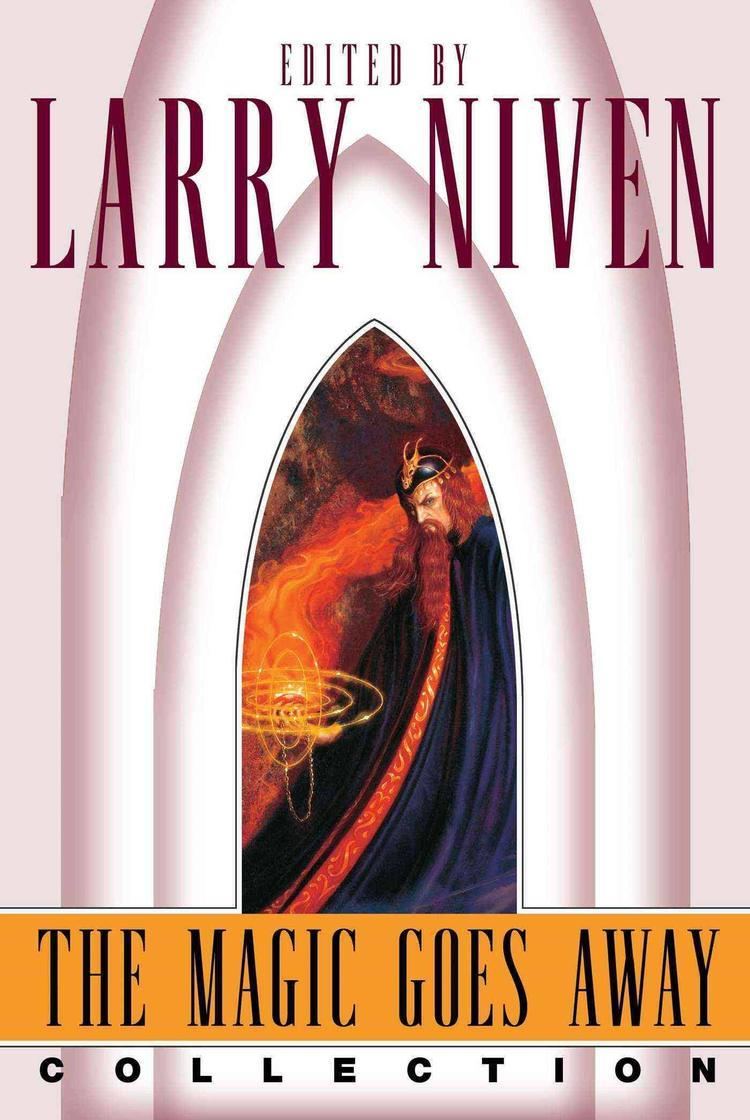7.4 /10 1 Votes7.4
Country United States Publication date 1976 Followed by The Magic May Return | 3.7/5 Goodreads Language English Originally published 1976 | |||||||||||||||||||||||||||||||||
 | ||||||||||||||||||||||||||||||||||
Nominations Locus Award for Best Art Book Similar Larry Niven books, Fantasy books | ||||||||||||||||||||||||||||||||||
The Magic Goes Away is a fantasy short story written by Larry Niven in 1976, and later expanded to a novella of the same name which was published in 1978. While these works were not the first in the "Magic Universe" or "Warlock" series, they marked a turning point after the 1973 oil crisis and Niven's subsequent transformation of the series into an allegory for a modern-day energy crisis. The setting was later used as a backdrop for a series of full-length novels, The Burning City (2000) and its sequel, Burning Tower (2005), which were co-written with Jerry Pournelle.
Contents
List of works in the series
This is a list of publications based on the setting of The Magic Goes Away.
Plot summary
The Warlock, whose actual name is both unknown and unpronounceable, is a powerful sorcerer in excess of 200 years of age. He observes that when he stays in one place too long, his powers dwindle and will return only when he leaves that place. Experimentation leads him to create an apparatus (now known as the Warlock's Wheel) consisting of a metal disc enchanted to spin perpetually. The enchantment eventually consumes all the mana in the vicinity, causing a localized failure in all magic. The Warlock realizes that magic is fueled by a non-renewable resource, which would cause great concern among the magicians, as it was through their magic that nations enforced their wills both internally and abroad. The widespread diminishing of magical power in The Magic Goes Away triggered a quest on the part of the most powerful of the magicians of the time to harness a new source of magic (the Moon), resulting in the events described in the book.
It was eventually discovered (in The Magic May Return) that mana was originally carried to Earth and the other bodies of the solar system on the solar wind, replenishing mana slowly over time. However, at some point in the "recent" past (a few thousand years ago) a god created an invisible shield between Earth and Sun that intercepted the solar mana and caused the eventual decline of magic on Earth.
Traditional fantasy creatures inhabit Niven's Magic universe, but devolve to normal animals when deprived of mana. For example, a unicorn becomes a simple horse.
Main characters
Minor characters
Reception
Richard A. Lupoff reviewed the 1978 novella unfavorably, saying that although the story "bristles with amusing devices," the writing itself was unsatisfactory: "Niven doesn't make any of it real for me; there's hardly a spark of humanity in the book. . . . [Niven uses] flat, dull, sterile narrative prose."
Influences
In her afterword to the novella, Sandra Miesel identified a number of influences on the setting: "The Wheels of If", The Incomplete Enchanter, The Blue Star, Operation Chaos, Too Many Magicians, The Dragon and the George, as well as Niven's earlier works, "All the Myriad Ways" and the Svetz series.
There are also several references to the works of H. P. Lovecraft, such as the reference of a mad magician named Alhazred and an amorphous god called the Crawling Chaos.
Graphic novel adaptation
The Magic Goes Away was adapted as a graphic novel, the sixth in the DC Science Fiction Graphic Novel series, by Paul Kupperberg and Jan Duursema in 1986.
In popular culture
These card games use a card called 'Nevinyrral' ('Larry Niven' spelled backwards):
